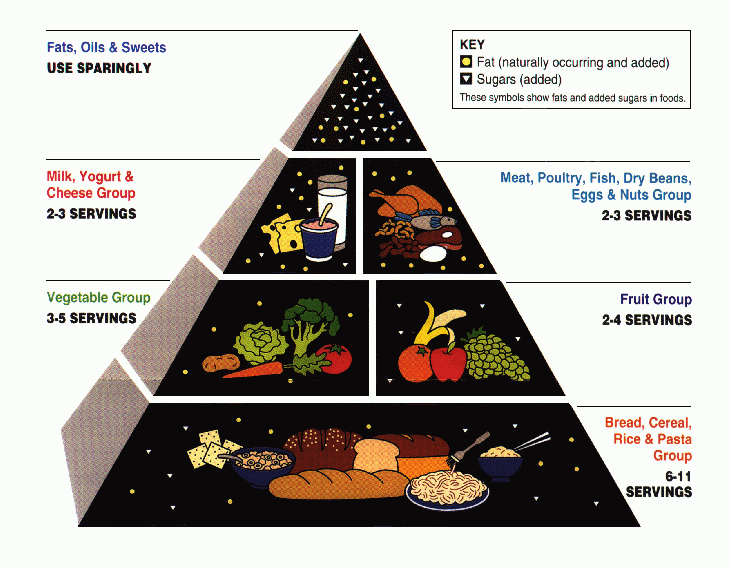Carbohydrate group
Carbohydrates are a source of energy that can be transformed into glucose, the form of sugar that is transported and used by the body, more quickly than proteins or fats. A diet too high in carbohydrates can upset the delicate balance of a body's blood sugar level, resulting in fluctuations in energy and mood that leave one feeling irritated and tired.
Vegetable group
A vegetable is a part of a plant consumed by humans that is generally savory but is not sweet. A vegetable is not considered a grain, fruit, nut,spice, or herb. For example, the stem, root, flower, etc., may be eaten as vegetables. Vegetables contain many vitamins and minerals; however, different vegetables contain different spreads, so it is important to eat a wide variety of types. For example, green vegetables typically contain vitamin A, dark orange and dark green vegetables contain vitamin C,and vegetables like broccoli and related plants contain iron and calcium. Vegetables are very low in fats and calories, but cooking can often add these.
It is recommended that people consume 2-3 servings of vegetables in a day. They may be fresh, frozen, canned, or juiced.
Fruit group
In terms of food (rather than botany), fruits are the sweet-tasting seed-bearing parts of plants, or occasionally sweet parts of plants which do not bear seeds. These include apples, oranges, plums, bananas, etc. Fruits are low in calories and fat and are a source of natural sugars, fiberand vitamins. Processing fruits when canning or making into juices unfortunately may add sugars and remove nutrients. The fruit food group is sometimes combined with the vegetable food group. Note that many foods considered fruits in botany because they bear seeds are not considered fruits in cuisine because they lack the characteristic sweet taste, e.g.,tomatos or avocados. It is best to consume 2-4 servings of fruit in a day. They may be fresh, frozen, canned, dried, pureed or juiced.
Fat Group
The food pyramid advises that fats be consumed sparingly. Butter and oils are examples of fats. Healthy sources of fat can be found in fish, nuts, and certain vegetables, such as avocados.
Dairy group
Dairy products are produced from the milk of mammals, most usually but not exclusively cattle. They include milk, yogurt and cheese. Milk and its derivative products are a rich source of the mineral calcium, but also provide protein, phosphorus, vitamin A, and vitamin D. However, many dairy products are high in saturated fat and cholesterol compared to vegetables, fruits and whole grains, which is why skimmed products are available as an alternative. For adults, 3 cups of dairy products are recommended per day.
Protein group
Meat is the tissue - usually muscle - of an animal consumed by humans. Since most parts of many animals are edible, there are a vast variety of meats. Meat is a major source ofprotein, as well as iron, zinc, and vitamin B12. Meats, poultry, and fish include beef, chicken, pork, salmon, tuna, and shrimp, eggs.
The meat group is one of the major compacted food groups in the food guide pyramid. Many of the same nutrients found in meat can also be found in foods like eggs, dry beans, andnuts, such foods are typically placed in the same category as meats, as meat alternatives. These include tofu, products that resemble meat or fish but are made with soy, eggs, andcheeses. For those who do not consume meat or animal products (see Vegetarianism, veganism and Taboo food and drink), meat analogs, tofu, beans, lentils, chick peas, nuts and other high-protein vegetables are also included in this group.
Although meats provide energy and nutrients, they are often high in fat and cholesterol, and can be high in sodium. Simply trimming off fatty tissue can go a long way towards reducing this negative effect. The food guide pyramid suggests that adults eat 2-3 servings per day. One serving of meat is 4oz, about the size of a deck of cards.


No comments:
Post a Comment